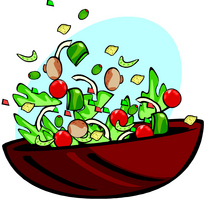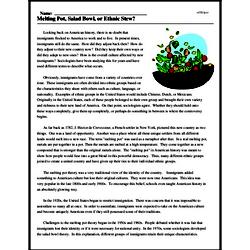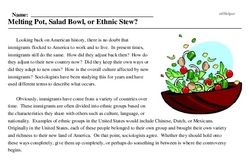Melting Pot, Salad Bowl, or Ethnic Stew?
Looking back on American history, there is no doubt that immigrants flocked to America to work and to live. In present times, immigrants still do the same. How did they adjust back then? How do they adjust to their new country now? Did they keep their own ways or did they adapt to new ones? How is the overall culture affected by new immigrants? Sociologists have been studying this for years and have used different terms to describe what occurs.
Obviously, immigrants have come from a variety of countries over time. These immigrants are often divided into ethnic groups based on the characteristics they share with others such as culture, language, or nationality. Examples of ethnic groups in the United States would include Chinese, Dutch, or Mexicans. Originally in the United States, each of these people belonged to their own group and brought their own variety and richness to their new land of America. On that point, sociologists agree. Whether they should hold onto these ways completely, give them up completely, or perhaps do something in between is where the controversy begins.
As far back as 1782, J. Hector de Crevecoeur, a French settler in New York, pictured this new country as two things. One was a land of opportunity. Another was a place where all these unique settlers from all different lands would melt into a new race. The term "melting pot" was used as a metaphor after that. In a real melting pot, metals are put together in a pot. Then the metals are melted at a high temperature. They come together as a new compound that is stronger than the original metals alone. The "melting pot" in American history was meant to show how people would fuse into a great blend in this powerful democracy. Thus, many different ethnic groups joined to create a united country and have given up their ties to their individual ethnic groups.




